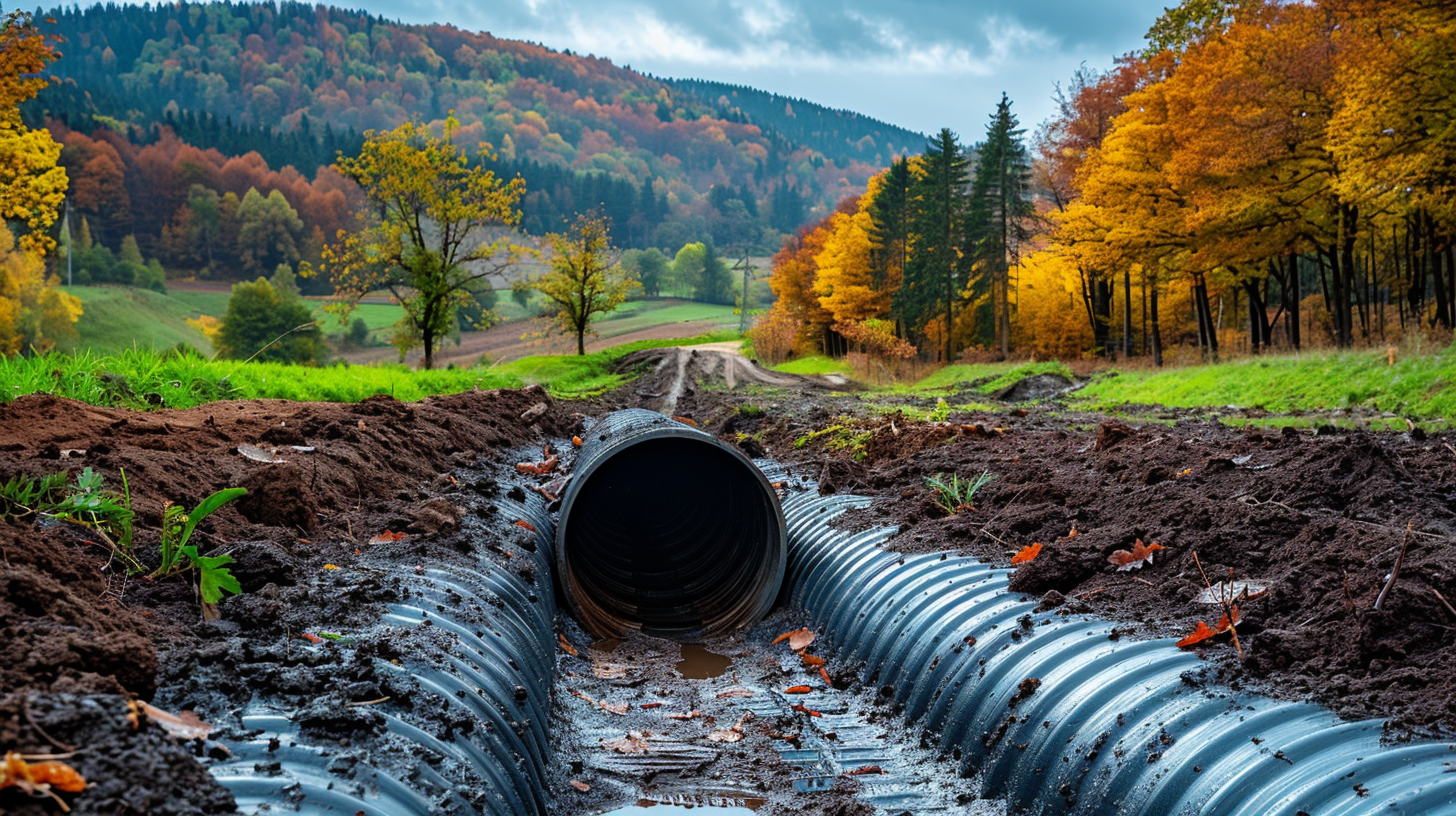Key Points
• Gravel-Free Setup: Gravelless septic pipes give an option that’s different from the normal gravel septic systems. They’re made to spread out the wastewater but don’t need gravel. This makes them quicker and cheaper to put in place.
• What They’re Made Of and How They Look: These pipes are usually made from light materials like plastic or stuff that’s been used before. They’ve got a wavy shape with holes built right into them. These holes let the wastewater soak into the soil around it and get filtered.
• Affecting the Environment: Gravelless septic setups are less harmful to the ground because they don’t mix up the soil as much. Plus, they’re better for nature since there’s not as much work needed to set them up and they lower the demand for digging up and moving gravel.
Contents
- 1 Key Points
- 2 Understanding Gravelless Septic Pipes
- 3 Introducing Gravel-Free Drain Field
- 4 Gravel vs. Gravelless Septic Systems
- 5 Mechanisms of Waste Treatment and Disposal
- 6 Environmental Benefits
- 7 Installation Efficiency
- 8 Cost Considerations
- 9 Longevity and Durability
- 10 Site Evaluation and System Design
- 11 Installation Techniques and Best Practices
- 12 Using Gravelless Systems at Home
- 13 Commercial and Large-Scale Implementations
- 14 Frequently Asked Questions (FAQ)
Understanding Gravelless Septic Pipes
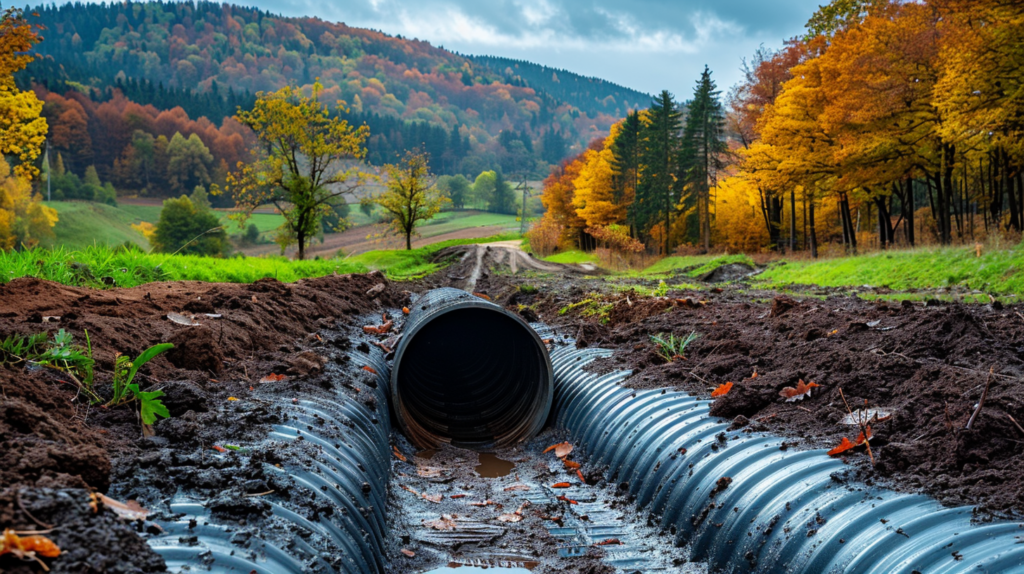
Gravelless septic pipes are a new twist in the waste disposal world. These systems are catching on because they’re cheaper and easier to put in place.
What They Are and How They Work
These cutting-edge pipes do their job without needing gravel to filter out wastewater. They’re made of light materials like fabric or plastic, designed with tiny openings that let the water spread evenly into the soil.
Stacking Up Against Old-School Gravel Systems
When you stack these up against old gravel-based systems, the perks are clear. No gravel means digging’s not such a big deal and you’ve got fewer chances of things getting jammed up. This can mean the system might last longer and you won’t have to mess with it as much.
Introducing Gravel-Free Drain Field
Searching for better and greener methods, the creation of septic pipes without gravel is a significant step forward in septic system technology. These new alternatives use things like polystyrene pieces, expanded clay, or special fabrics to make installation easier and let waste water spread into the soil right away. This breakthrough is good for its effectiveness and it’s also kinder to the planet because it uses less natural resources like the gravel used in old systems.
Gravel-free septic pipes stand out because they’re made differently, offering a fresh choice compared to old gravel systems. They’re mostly plastic or other light stuff, which helps waste water go from the tank to the soil, no gravel needed for cleaning or holding it up.
What These Pipes Are Made Of
The pipes without gravel are made of tough materials like plastic that can handle the harsh stuff in sewage. They’re picked for lasting a long time, being able to bend without breaking, and letting water through well, so they clean waste water efficiently and don’t get damaged so fast.
Different Shapes and Sizes
You can find various designs and setups to fit different types of ground and how much room there is. There are choices like pipes with holes that slowly let the waste water out into the nearby dirt to spread and clean it well.
Bigger Chamber Types
Big chambers with no bottom are part of chamber systems that help waste water move into the dirt underneath. People like them because they’re not hard to put in place and can deal with lots of waste water.
Pipes Covered in Fabric
There are also pipes wrapped in a geotextile fabric. The fabric works like a filter, keeping dirt out while letting water flow through. They’re a smart fix for spots where tiny dirt bits might block up a normal septic system.
Fake Rocks for Cleaning Water
Replacing old stone with fake rocks in gravel-free septic pipes makes sure the waste water gets cleaned correctly. This method works well since these man-made materials have lots of tiny holes that help with passing and cleaning the water.
Gravel vs. Gravelless Septic Systems
Old-school septic systems use gravel to clean and spread waste water in the drain field. The new gravelless systems use different materials or pipe layouts, which could work better for getting rid of wastewater. When you put them side by side, gravelless systems are not as heavy and simpler to put in, which can mean they’re cheaper to start with. Although some folks might doubt it, the facts show that these modern systems are usually just as good, or even better than the old gravel-based ones.
Mechanisms of Waste Treatment and Disposal
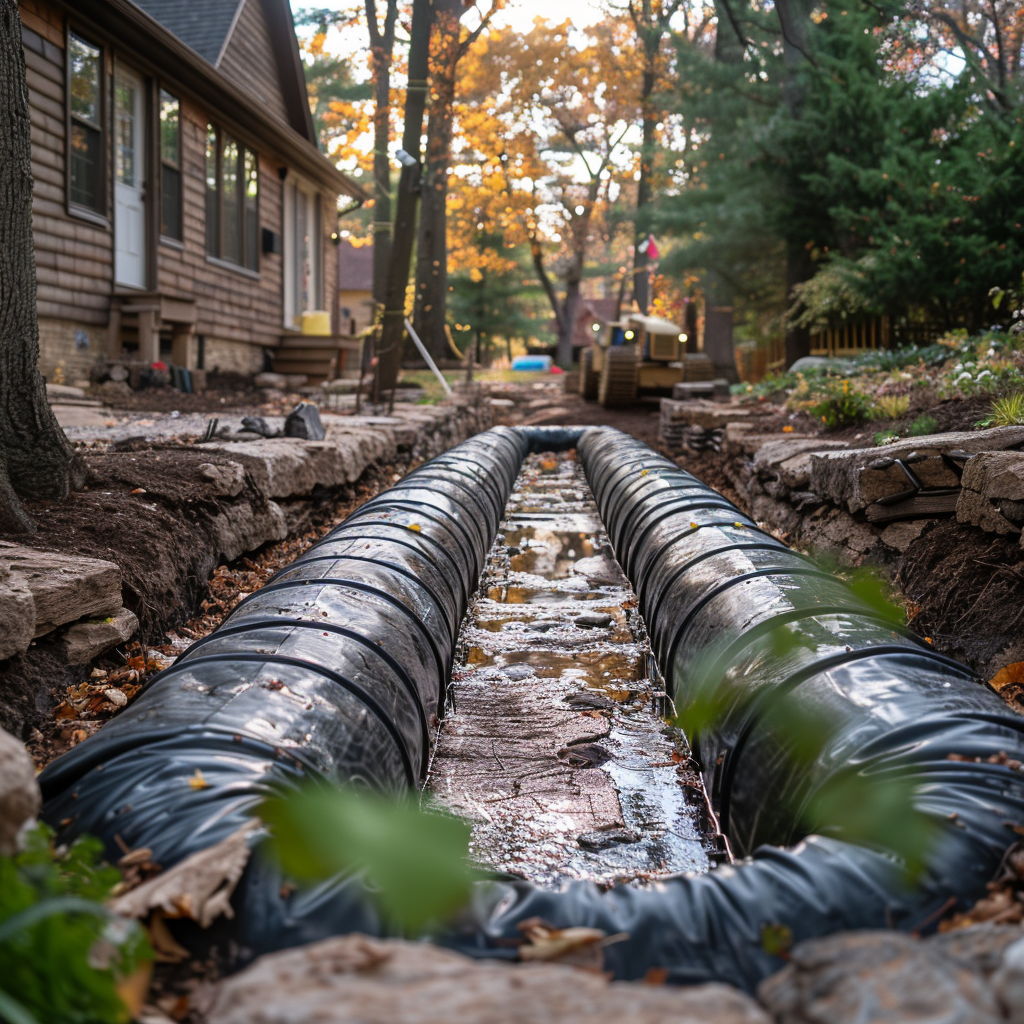
Gravelless septic pipes are designed to move wastewater from septic tanks into the ground without trouble. They can change to fit different conditions, breaking down waste using soil and tiny organisms. This natural process cleans up the waste, turning it into safe stuff that goes back to nature or moves deeper underground.
One advantage of these pipe systems is they don’t clog as easily as old-school gravel ones, meaning they last longer and do a better job. Plus, they don’t need as much digging or gravel, which is good for the planet. They’re also faster to put in place. So, they’re winning for people who care about the environment and need a solid way to handle their waste.
Soil Science and Percolation
These septic systems work because soil can naturally filter stuff out. The water from home sewage gets clean by passing through the dirt, helped by microbes living there. The speed at which water goes through the soil, or percolation rate, is super important for these systems to work right. How well water moves depends on what the soil’s made of – like sand or clay – which changes how fast wastewater can flow, making some soils a better match for these systems.
Hydraulic Conductivity and Flow Dynamics
Hydraulic conductivity is about how easily liquid moves through stuff with holes, like soil. It’s key for how water spreads in gravelless systems. It has to be just right: if it’s too quick, the cleaning isn’t done well; if it’s too slow, problems can happen. The science of moving fluids makes sure wastewater spreads out well in the soil, so we don’t need gravel for filtering here.
Biological and Chemical Processes in Effluent Treatment
In these septic setups, biology and chemistry team up to make wastewater harmless. Bacteria munch on organic junk, while other tiny critters handle nitrogen stuff by changing it. Phosphates and other nasty bits stick to soil thanks to chemical reactions, cleaning the water even more. All this science magic means the wastewater ends up safe enough to not mess with Mother Nature.
Environmental Benefits

Septic pipes without gravel are kinder to nature than the old-style ones that need gravel. Since we don’t have to dig up, move, or lay down gravel with these pipes, there’s less messing with the soil. This helps keep the area’s natural setup safe. Also, their design makes sure waste water gets cleaned properly by the dirt around them. This keeps everything underground healthy and makes sure our groundwater stays pure.
Installation Efficiency

Putting in a gravelless septic system is simpler as it cuts out the hard work of shifting and setting up gravel. The workers can set up these easy-to-handle pipes fast and without much struggle. That means they spend less time working, which causes fewer problems on the property. So, people who own the property are happy with how quick the setup is done, and they also like that it doesn’t mess up their yard too much.
Cost Considerations
Talking about money, you can save a lot with gravelless septic pipe systems. There’s no need to buy or move gravel around, and you won’t pay for people to work with it either. That cuts down costs right away. Plus, these systems can be put in way faster, which means paying less for labor. So, for folks looking at this greener choice, it can mean spending a whole lot less in the end.
Longevity and Durability
Gravelless septic pipes are built tough, so they usually last longer than the old-school gravel types. They’re designed to take a beating from rough soil without wearing down fast. Plus, they don’t get blocked as easily as gravel systems do—that means less trouble with upkeep and swapping parts out. In short, a gravelless septic system is made to last, giving you solid performance for the long haul.
Site Evaluation and System Design
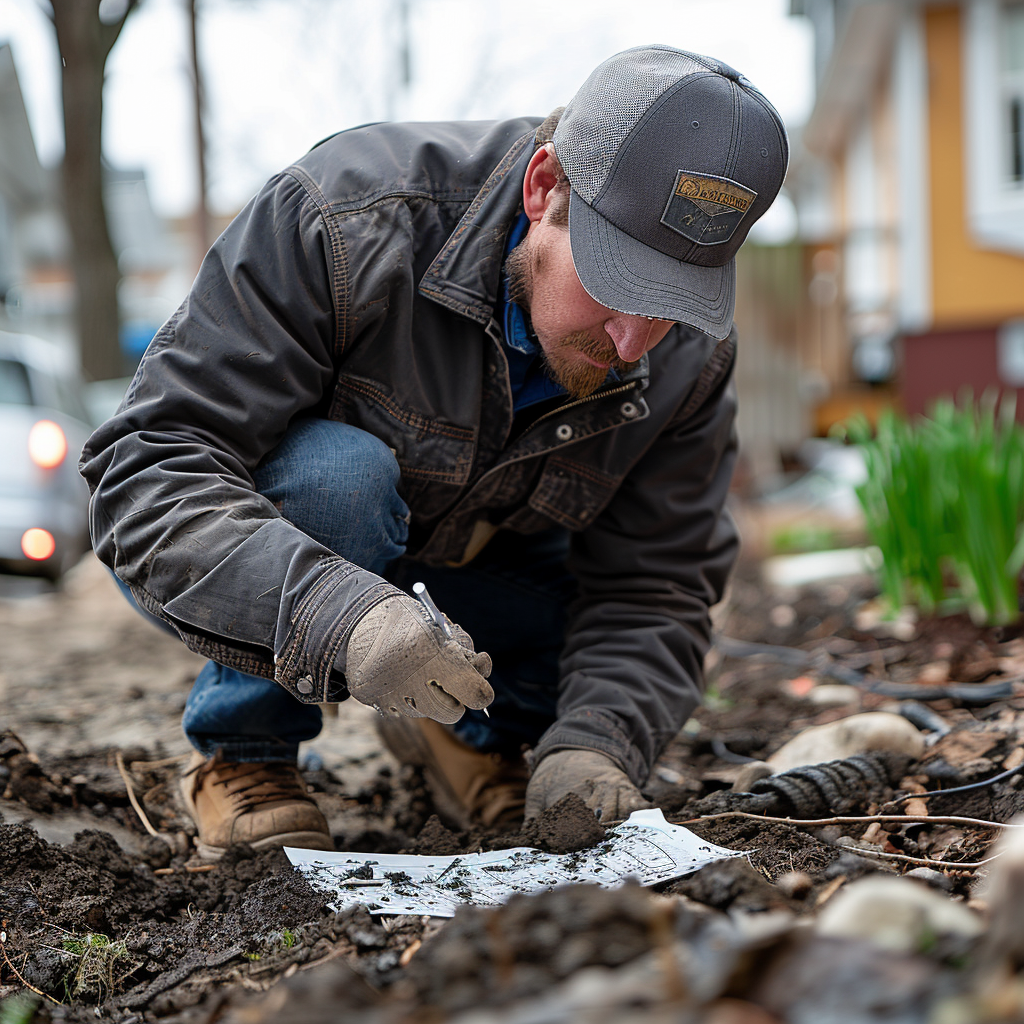
When you’re getting ready to put in a gravelless septic system, it’s super important to check out the site first. You gotta look at what kind of soil is there, the shape of the land, and how high the water table is. This helps make sure the system will work right and clean the sewage properly. When designing the system, you also have to think about local laws to make sure you’re not breaking any. And don’t forget, the system has to be big enough for your house and how much water you’ll use.
Installation Techniques and Best Practices
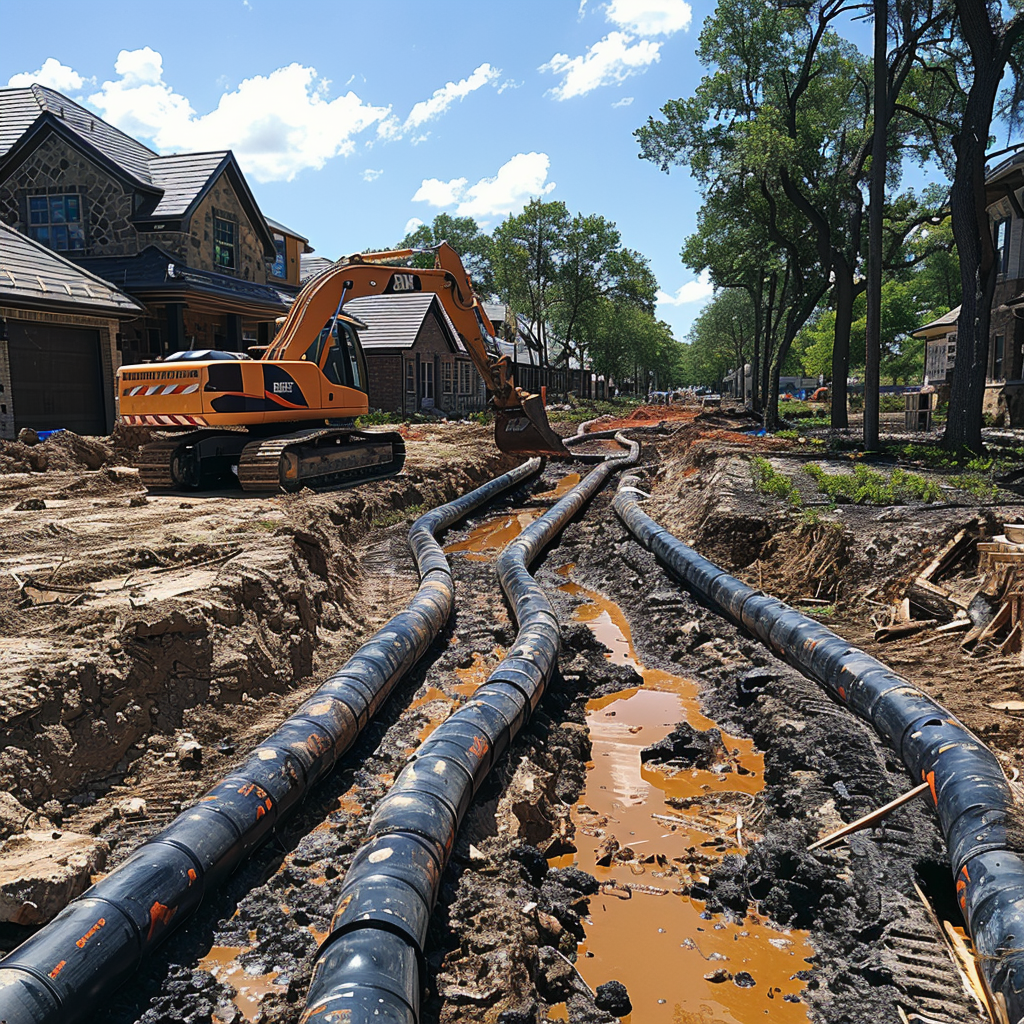
It’s crucial to install a gravelless septic system correctly. Dig trenches to the right size to make sure there’s enough room for the wastewater to be absorbed. The pipes should be put down flat and joined well so they don’t leak or get blocked. Laying a geotextile fabric over them helps stop dirt from getting in and clogging the system.
Maintenance Requirements
Gravelless septic systems need regular upkeep. It’s a good idea to empty the tank every couple of years to keep solids from building up and slowing down the system. It’s also smart to inspect the pipes often to find any issues early on.
Inspection Routines
Regular checks are key for keeping your system working well and stopping breakdowns. You should look out for wastewater coming up to the surface, check that the pipes are in good shape, and make sure the tank isn’t full of too much solid waste.
Local and National Regulations
Different places have their own rules about putting in septic systems, which go along with the national guidelines. This helps with sanitation and protecting nature. Some places say certain septic systems are needed based on the soil types and how close they are to water. So, you should talk to the local authorities about what rules you need to follow before you put in a gravelless septic system.
Permits and Inspections
Before you start your septic system project, you have to get all the correct permits. You do this by giving detailed plans for local officials to look at and OK. After you get the permits, expect several inspections while you’re doing the work.
These checks make sure you’re keeping up with safety and environment standards. Keeping in line with permit rules means you won’t face delays and makes sure your septic system is legal and safe.
Compliance with Environmental Standards
Your gravelless septic pipes have to meet environmental rules, which are about things like treatment methods, how clean the wastewater is, and whether they affect groundwater. If a system doesn’t meet these standards, it could cause serious damage, like making water sources dirty. Regular maintenance checks help keep your system legal and in good shape, and cuts down on risks to nature.
In short, understanding and sticking to rules when you deal with gravelless septic pipes isn’t just good—it’s a must. Make sure you talk often with local officials, stick to your inspection times, and see that your system meets all the environmental rules so you can be sustainable and skip legal issues.
Using Gravelless Systems at Home
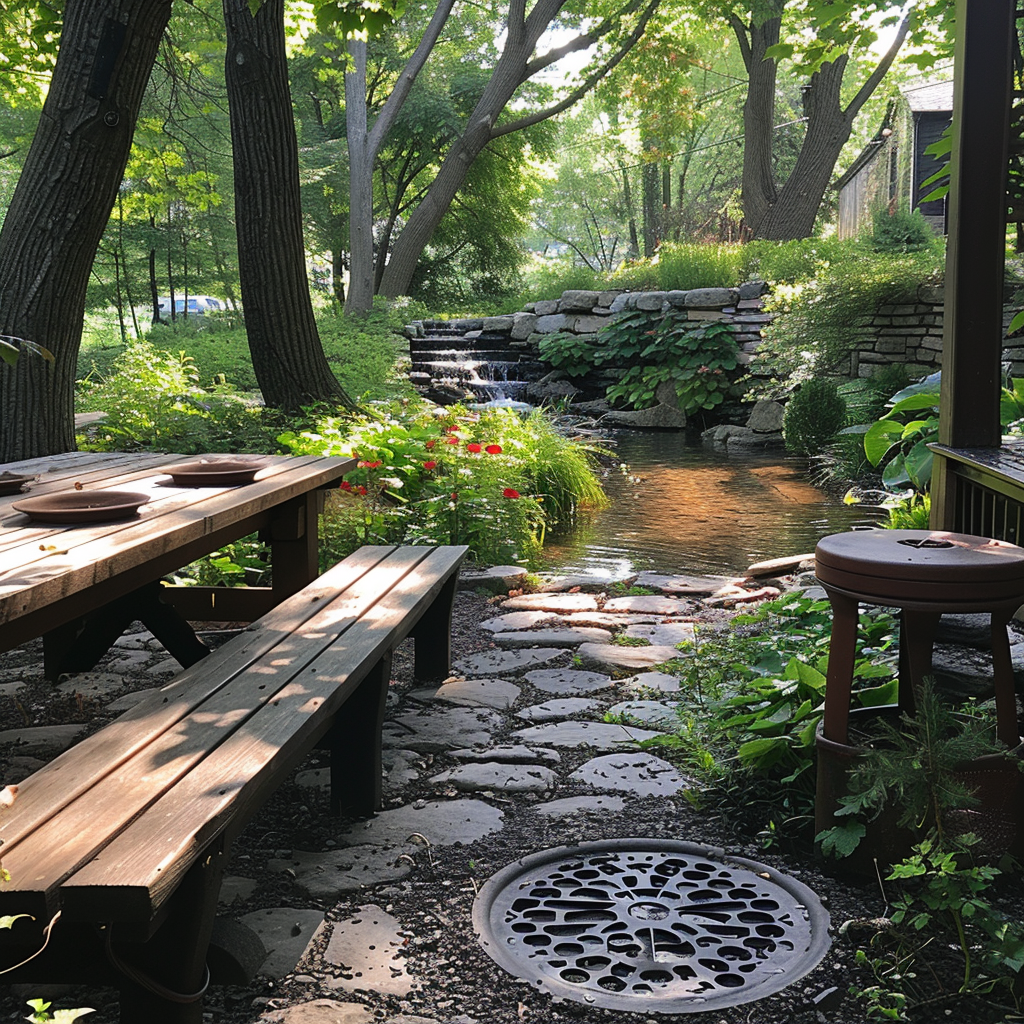
Gravelless septic pipes are a modern choice compared to old-school ones for dealing with home sewage. They ditch the typical gravel and instead use special modules or bendy pipes that spread out wastewater evenly into the ground. These systems are great for houses, especially if there’s not much space or if people are worried about the environmental impact of using gravel.
Commercial and Large-Scale Implementations
Gravelless septic systems have shown their worth not just in homes but also in large projects. These systems work great for neighborhood developments and countryside schools, handling a lot of wastewater without a hitch. They excel in various environments, making them top picks for big-time waste management jobs.
Frequently Asked Questions (FAQ)
Can PVC pipe effectively replace gravel in drainage systems?
Yes, PVC pipe can be an efficient alternative to gravel in certain drainage systems due to its durability, ease of installation, and effective waste water management.
Is there a risk of groundwater contamination without gravel in septic systems?
Well-designed gravelless septic systems maintain a low risk for groundwater contamination if installed correctly and maintained, just as traditional gravel-based systems do.
What’s the role of fabric in gravelless sewer pipes?
Fabric wrapped around sewer pipes in gravelless systems acts as a filter to prevent soil particles from entering the pipes, thus maintaining proper drainage and preventing clogs.
Are clay drain pipes superior to PVC plastic in drainage systems?
While clay drain pipes are more traditional and have a long legacy, PVC plastic is often preferred for its strength, longevity, and resistance to root intrusion.

I’m Tim Robberts, a seasoned wastewater treatment & septic system expert with over 40 years of experience in the field. My career began as a septic tank installer, and I quickly gained a reputation for my attention to detail and commitment to excellence. Over the years, I’ve honed my skills in designing, installing, and maintaining septic systems for residential and commercial properties.
